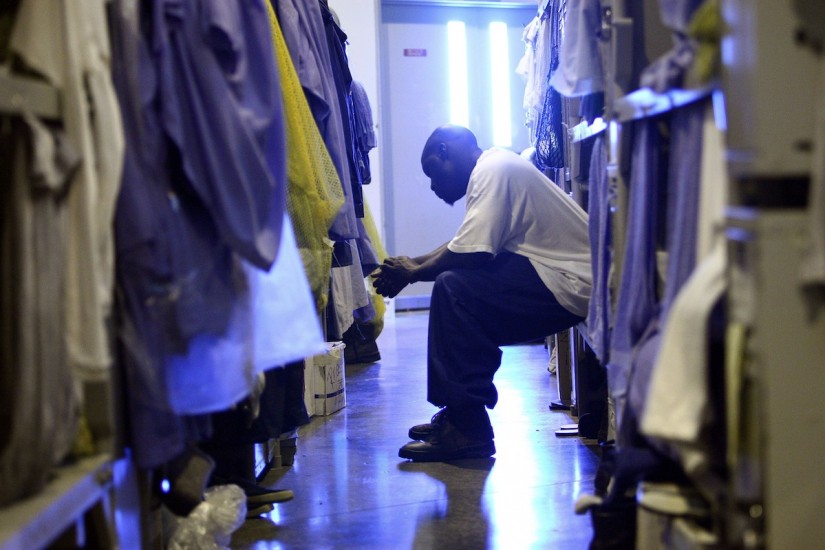Shenk: What was the Long-Range Master Plan?
Hinton: I think this is one of the most important discoveries I made researching the book. In 1970 Nixon orders Attorney General John Mitchell to devise a ten-year Long-Range Master Plan for American corrections. Nixon says we’re going to spend $500 million to revitalize the federal system and this is going to be a model for states. The Crime Commission—which was started by Johnson—starts making projections of prison populations based on what the black youth population would be, and prison construction is planned accordingly.
This Long-Range Master Plan is important because it debunks the idea that mass incarceration is something that policymakers didn’t anticipate or plan for, or that it was a response to crime. When I came across this document in the Nixon archives, I didn’t know quite what to do with it. It’s really eerie. You see the prison population is 200,000 or so in 1970, and then there’s a huge spike where policymakers project it will go up by about half a million by 1980.
Then in the mid-1970s, as the plan was unfolding, the congressional research service found correlations between unemployment and incarceration, but instead of supporting programs that might have dealt with unemployment, they decide we need to build more prisons. Beginning in 1970, the federal government begins to give states 75 percent off for prison construction. And the prison population transitions from being majority white to majority black and Latino, sometime around 1975.
Shenk: Another concept that emerges a little bit earlier and it navigates around similar circles but has a very different trajectory is “maximum feasible participation.” It sounds like there couldn’t be anything more bureaucratic in the world, but it became a flashpoint of controversy. Can you explain what it was?
Hinton: I think the principle of “maximum feasible participation” was the most promising aspect of the War on Poverty and what we need to come back to now. It’s the most radical component of the Economic Opportunity Act, and the idea is that communities can better respond to their own problems than policymakers so grants should go directly to local organizations. Under this principle, community groups did phenomenal things. But state and local officials—particularly local officials—really disliked the principle because they thought it gave marginalized communities too much power. The golden age of maximum feasible participation lasts from 1964, when the legislation is enacted, until the fall of 1965, when Congress amends the legislation. This is in the aftermath of the Watts uprising of August 1965, which many policymakers took as proof that the War on Poverty wasn’t working, even though programs had just started running nationwide. The riots were used as fuel to take autonomy away from these grassroots organizations. Municipal officials, and police officers in some cases, started to play an increasing role in deciding how these funds would be allocated.
